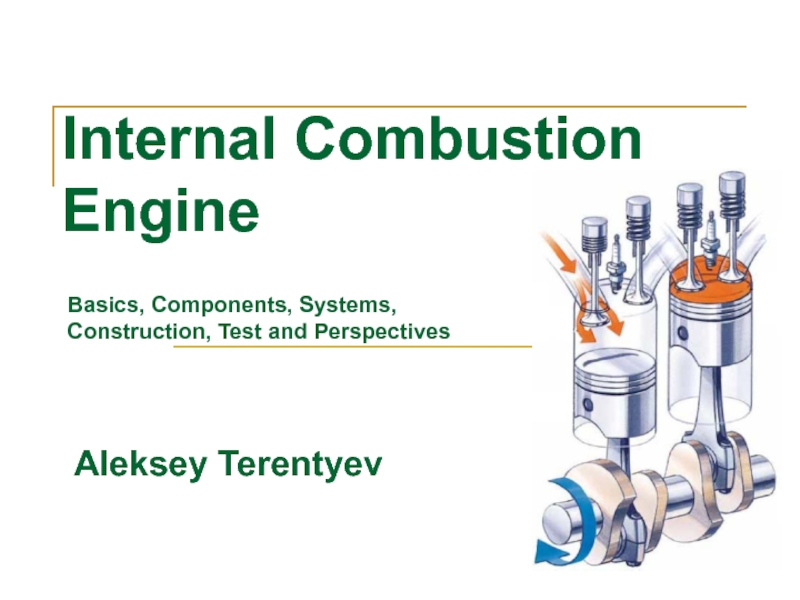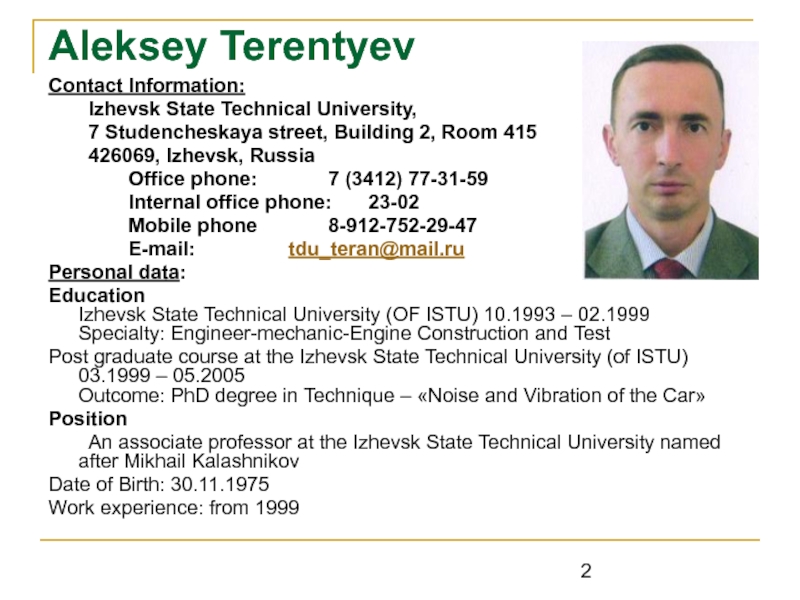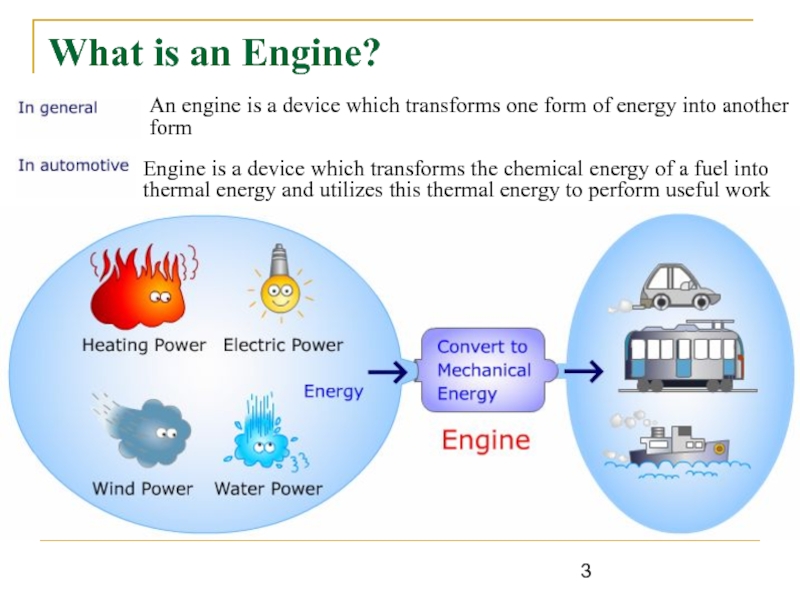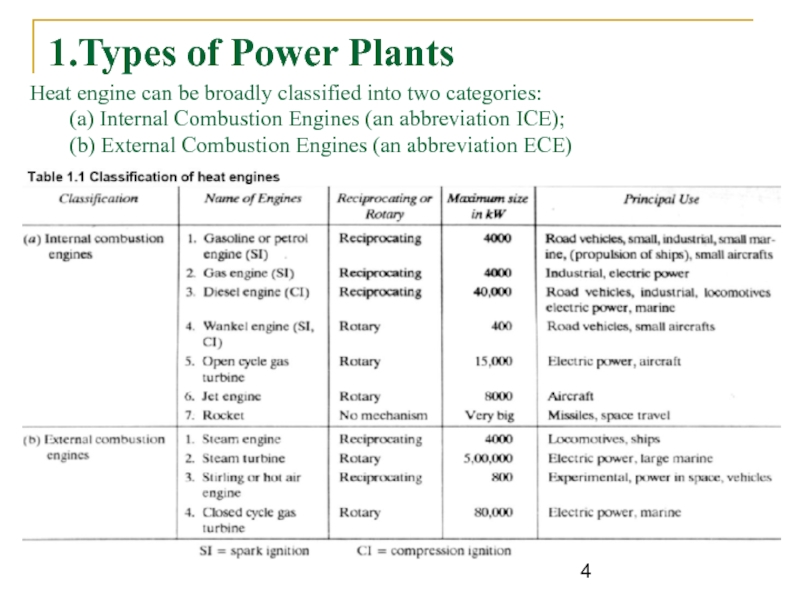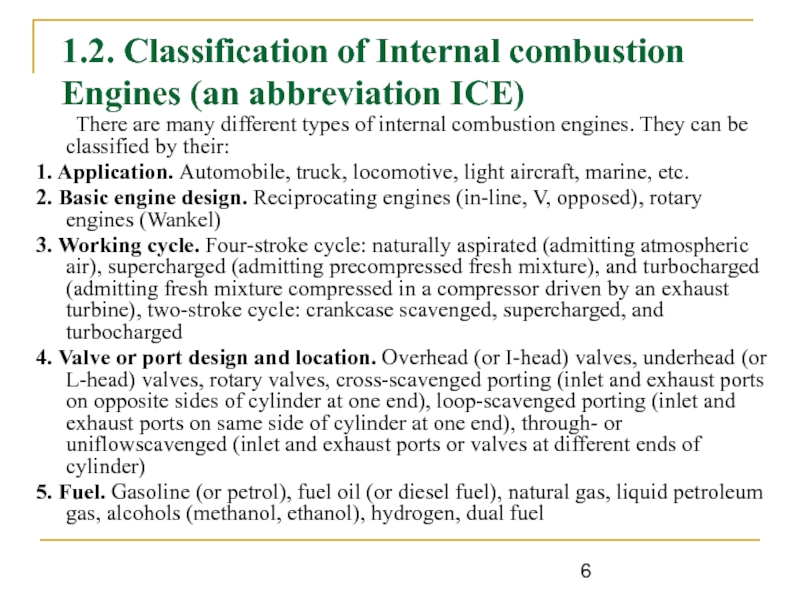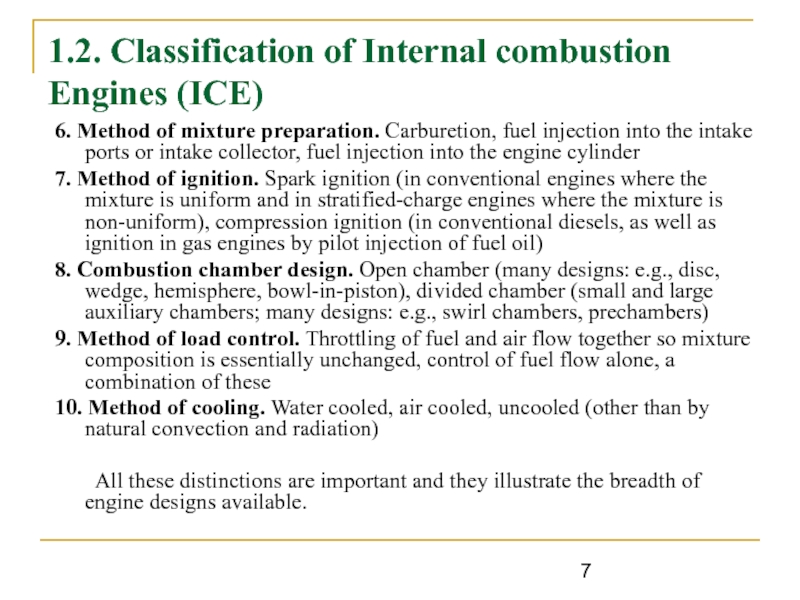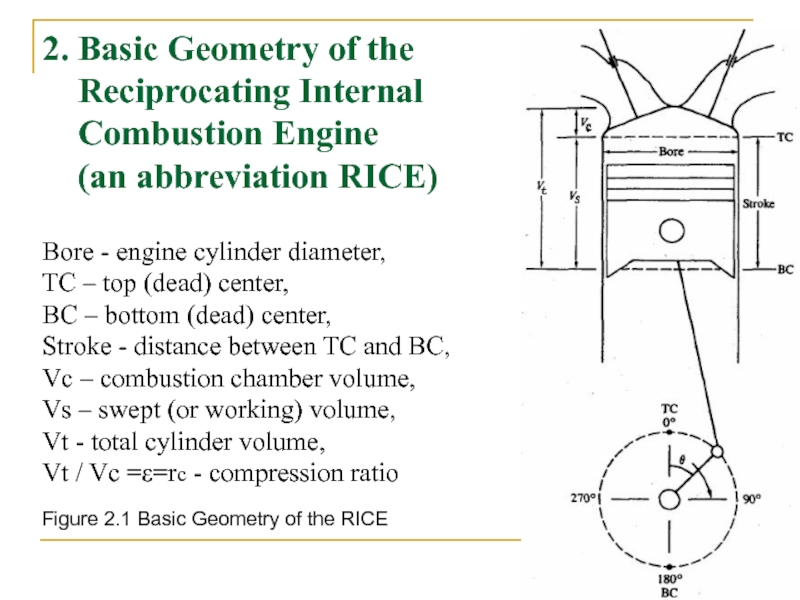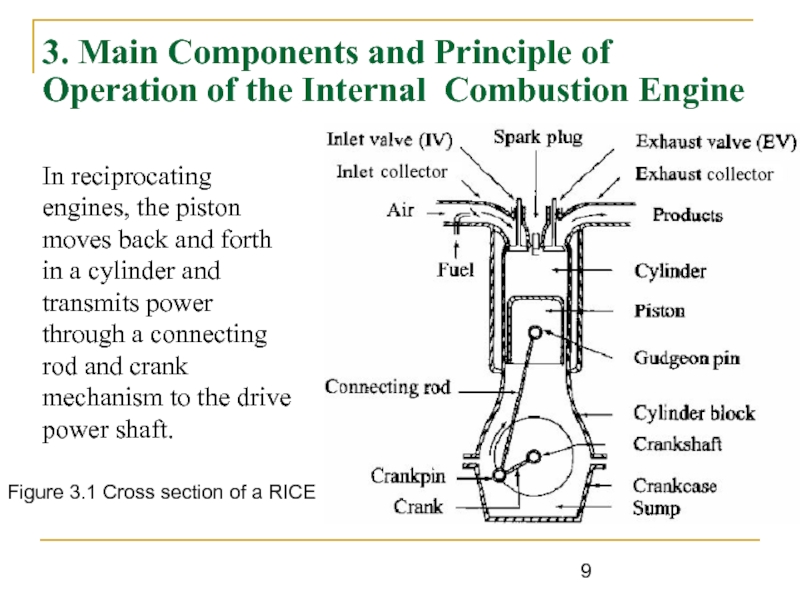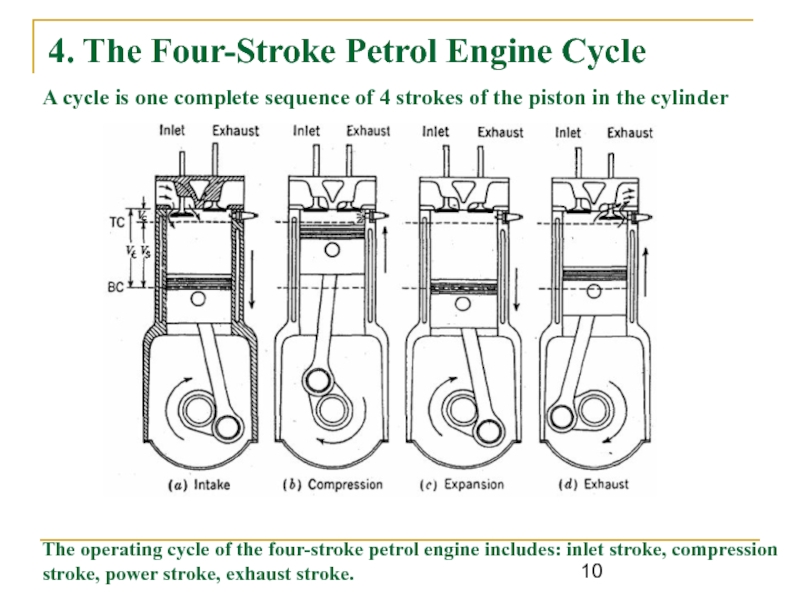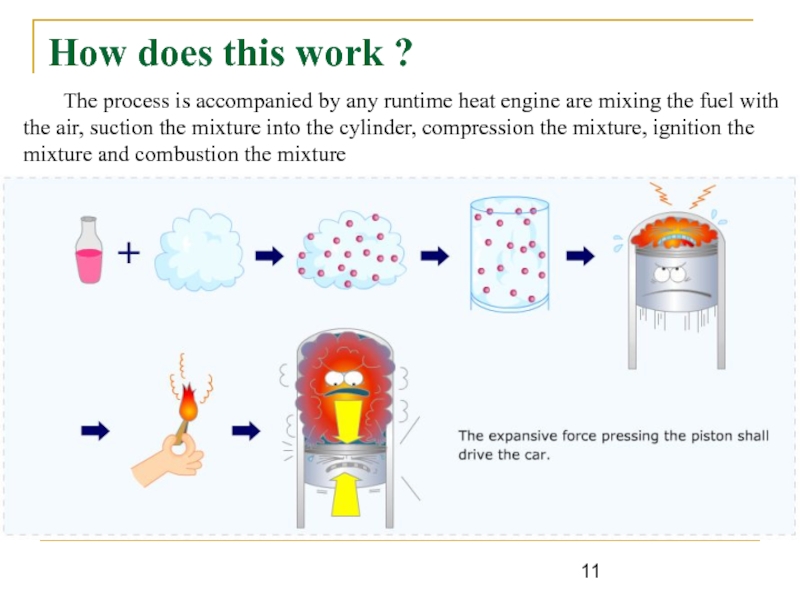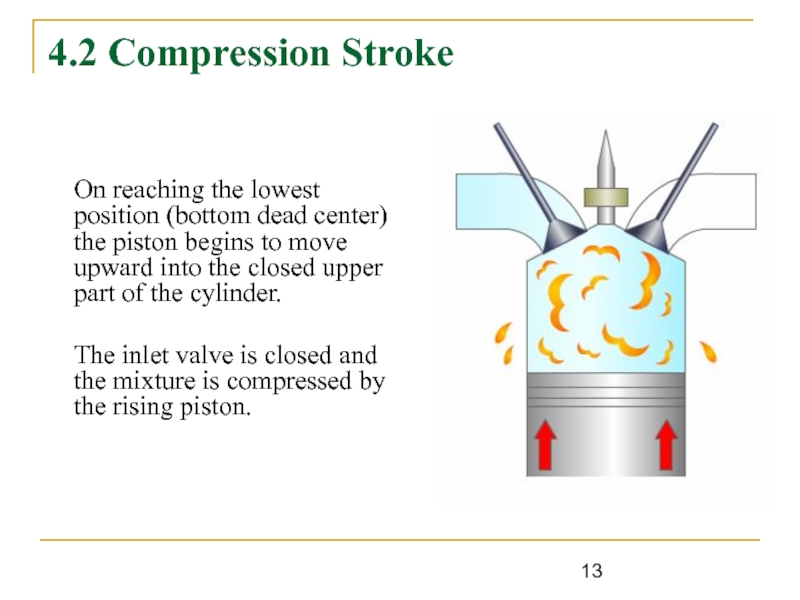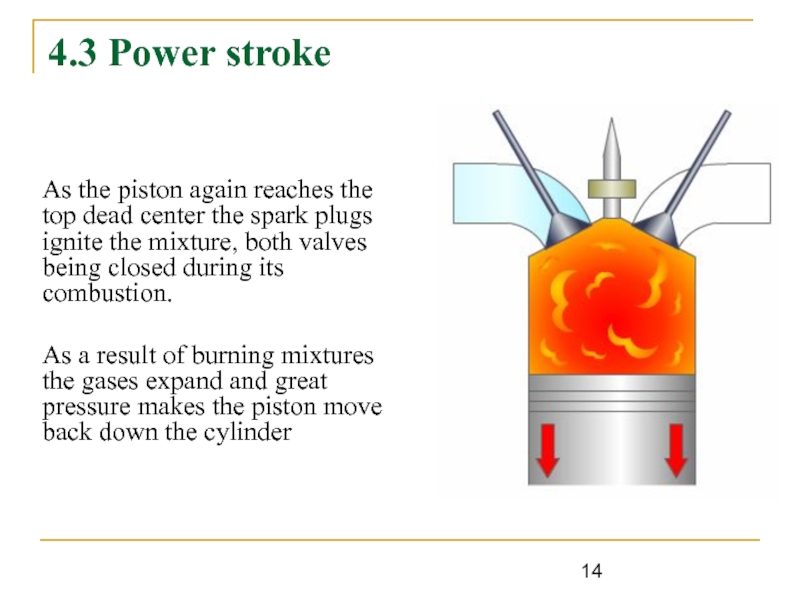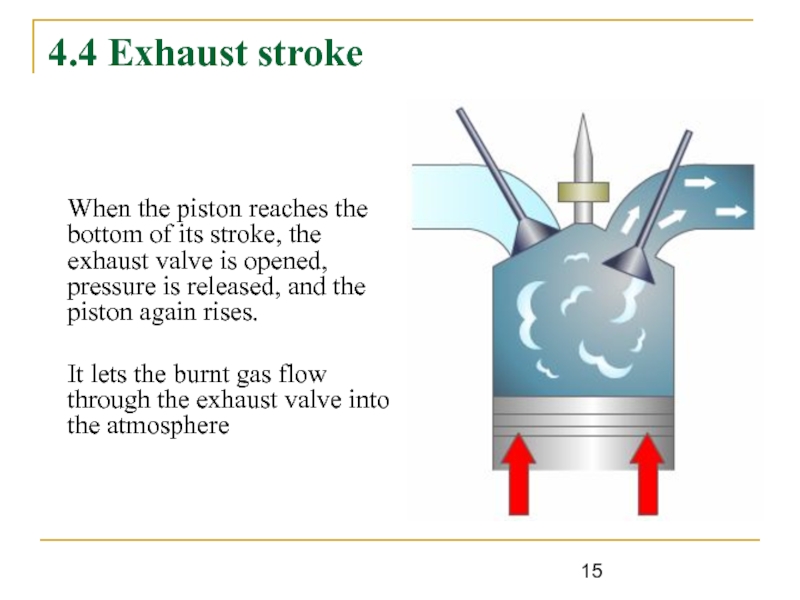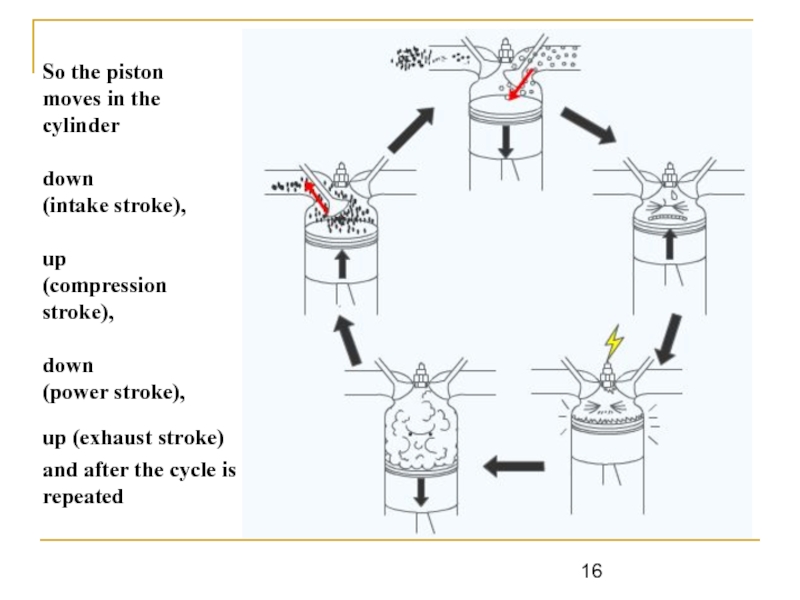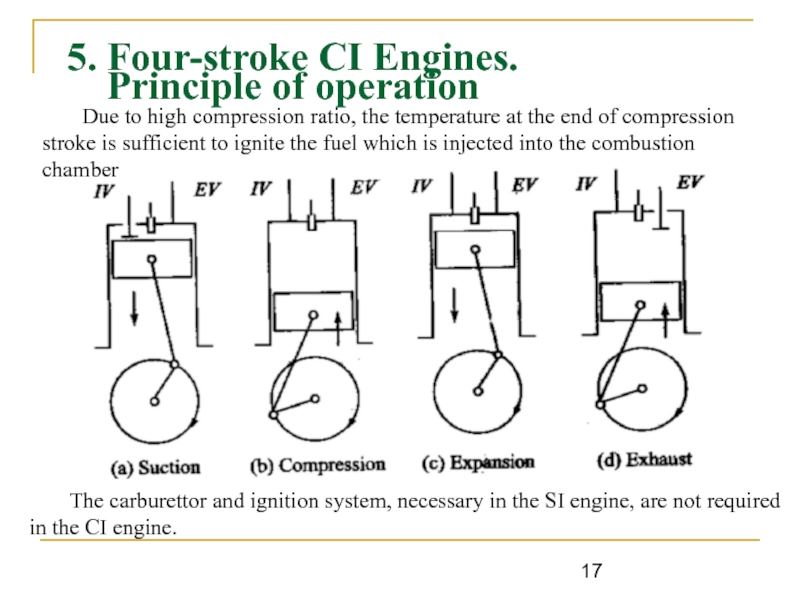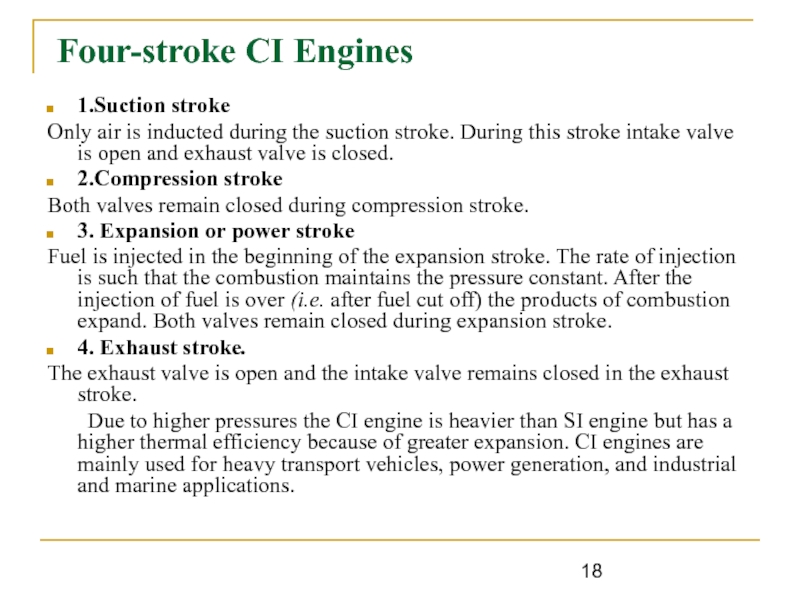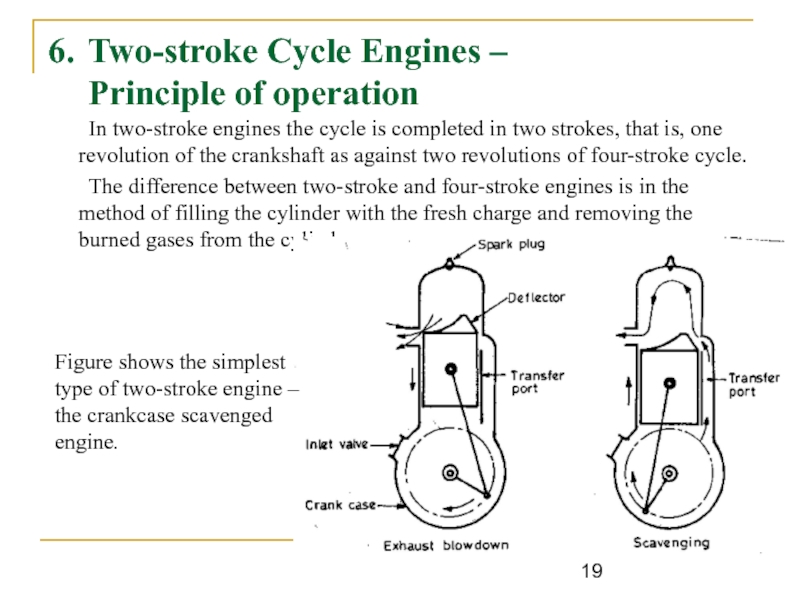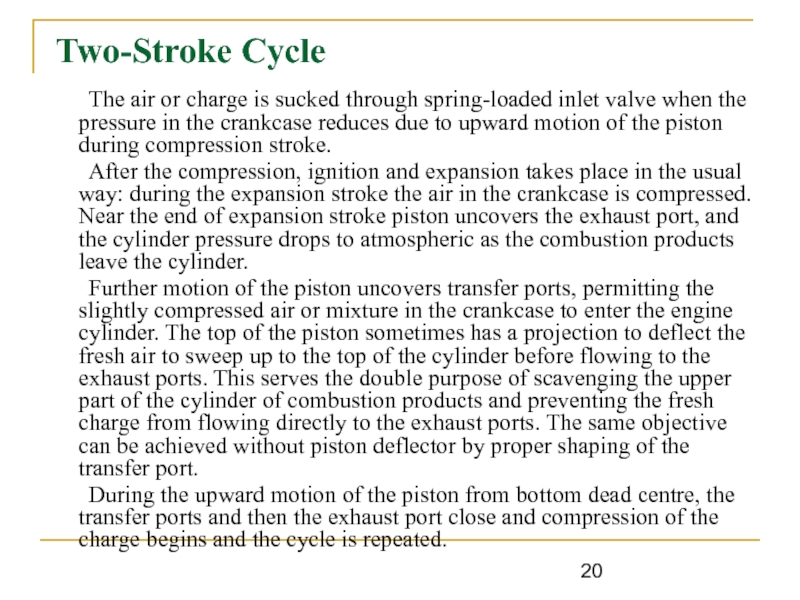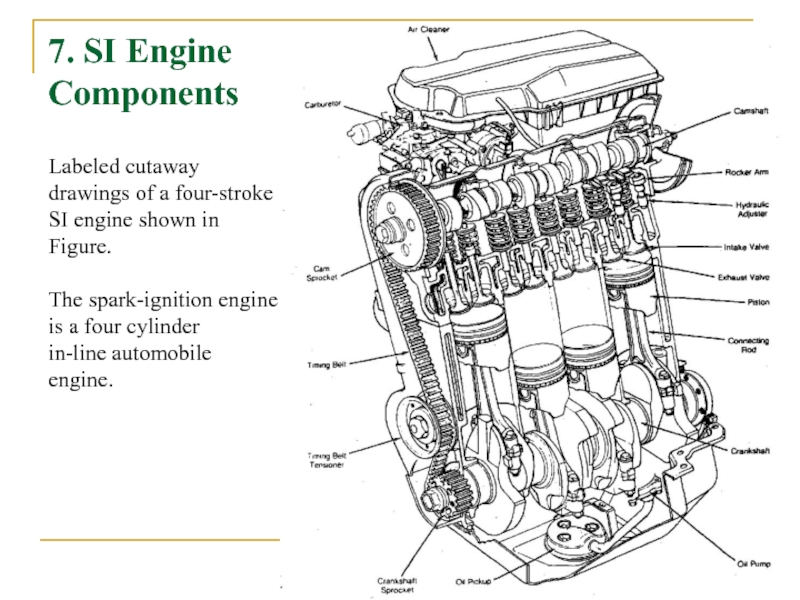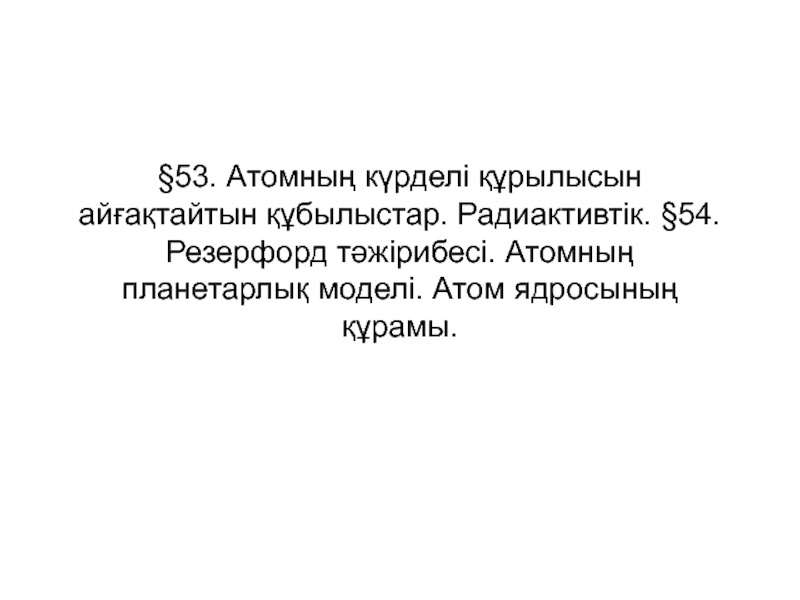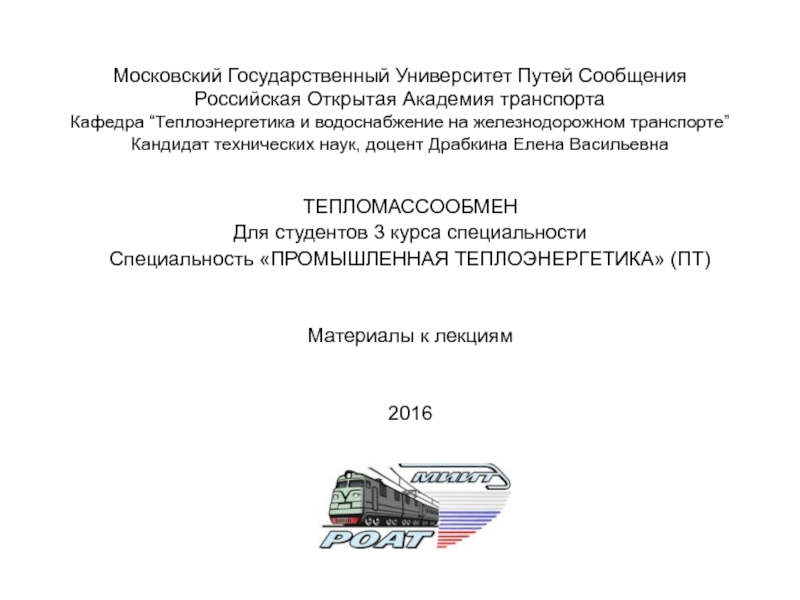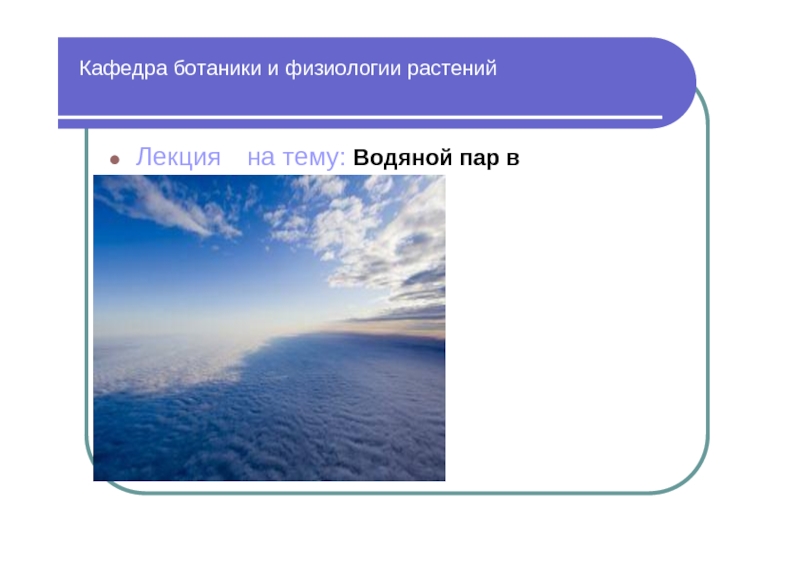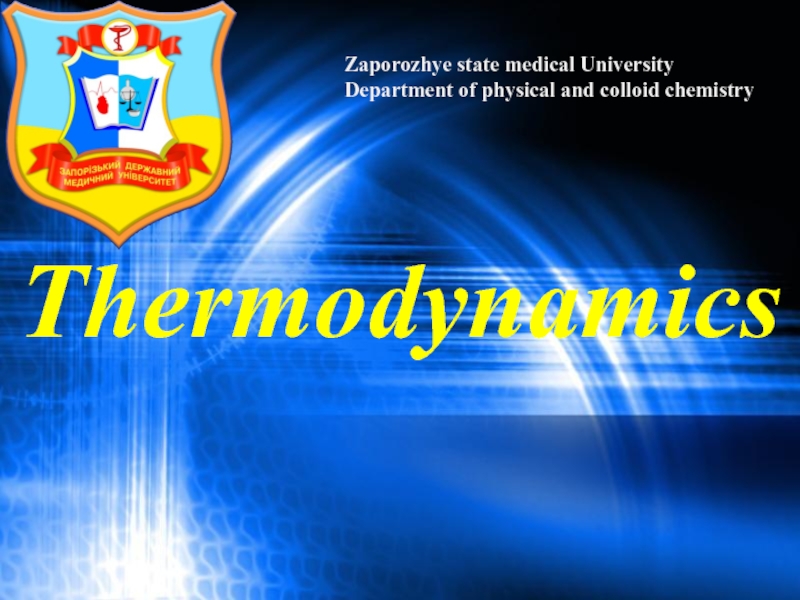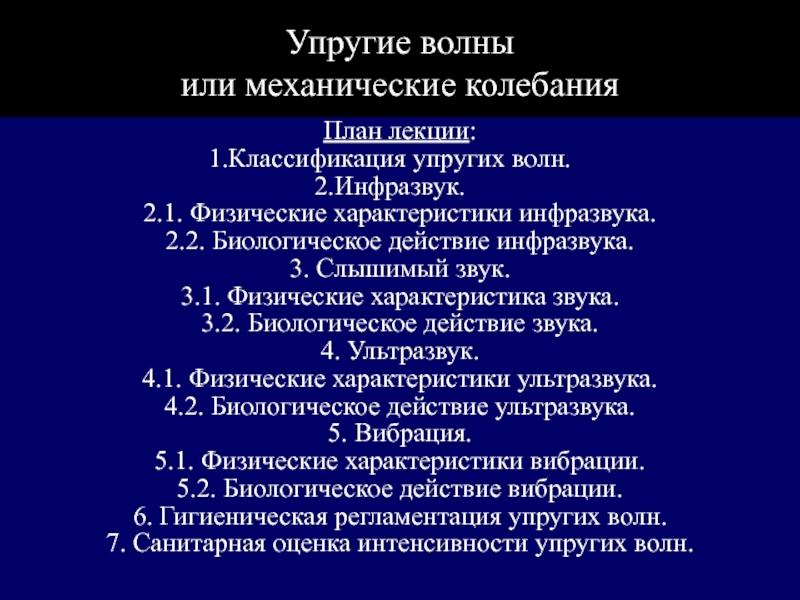- Главная
- Разное
- Дизайн
- Бизнес и предпринимательство
- Аналитика
- Образование
- Развлечения
- Красота и здоровье
- Финансы
- Государство
- Путешествия
- Спорт
- Недвижимость
- Армия
- Графика
- Культурология
- Еда и кулинария
- Лингвистика
- Английский язык
- Астрономия
- Алгебра
- Биология
- География
- Детские презентации
- Информатика
- История
- Литература
- Маркетинг
- Математика
- Медицина
- Менеджмент
- Музыка
- МХК
- Немецкий язык
- ОБЖ
- Обществознание
- Окружающий мир
- Педагогика
- Русский язык
- Технология
- Физика
- Философия
- Химия
- Шаблоны, картинки для презентаций
- Экология
- Экономика
- Юриспруденция
Internal сombustion engine basics, components, systems, construction, test and perspectives презентация
Содержание
- 1. Internal сombustion engine basics, components, systems, construction, test and perspectives
- 2. Aleksey Terentyev Contact Information: Izhevsk
- 3. What is an Engine? An engine is
- 4. 1.Types of Power Plants Heat engine can
- 5. 1.1. Classification of Heat Engines Engines whether
- 6. 1.2. Classification of Internal combustion Engines (an
- 7. 1.2. Classification of Internal combustion Engines (ICE)
- 8. 2. Basic Geometry of the
- 9. 3. Main Components and Principle of Operation
- 10. 4. The Four-Stroke Petrol Engine Cycle A
- 11. How does this work ? The process
- 12. 4.1 Inlet Stroke To describe the complete
- 13. 4.2 Compression Stroke On reaching the lowest
- 14. 4.3 Power stroke As the piston again
- 15. 4.4 Exhaust stroke When the piston reaches
- 16. So the piston moves in the
- 17. 5. Four-stroke CI Engines. Principle
- 18. Four-stroke CI Engines 1.Suction stroke Only
- 19. 6. Two-stroke Cycle Engines – Principle
- 20. Two-Stroke Cycle The air or charge
- 21. 7. SI Engine Components Labeled cutaway
- 22. 8. CI
Слайд 1Internal Сombustion
Engine
Basics, Components, Systems, Construction, Test and Perspectives
Aleksey Terentyev
Слайд 2Aleksey Terentyev
Contact Information:
Izhevsk State Technical University,
7 Studencheskaya street, Building
426069, Izhevsk, Russia
Office phone: 7 (3412) 77-31-59
Internal office phone: 23-02
Mobile phone 8-912-752-29-47
E-mail: tdu_teran@mail.ru
Personal data:
Education Izhevsk State Technical University (OF ISTU) 10.1993 – 02.1999 Specialty: Engineer-mechanic-Engine Construction and Test
Post graduate course at the Izhevsk State Technical University (of ISTU) 03.1999 – 05.2005 Outcome: PhD degree in Technique – «Noise and Vibration of the Car»
Position
An associate professor at the Izhevsk State Technical University named after Mikhail Kalashnikov
Date of Birth: 30.11.1975
Work experience: from 1999
Слайд 3What is an Engine?
An engine is a device which transforms one
Engine is a device which transforms the chemical energy of a fuel into thermal energy and utilizes this thermal energy to perform useful work
Слайд 41.Types of Power Plants
Heat engine can be broadly classified into two
(a) Internal Combustion Engines (an abbreviation ICE);
(b) External Combustion Engines (an abbreviation ECE)
Слайд 51.1. Classification of Heat Engines
Engines whether Internal Combustion or External Combustion
(I) Rotary engines
(II) Reciprocating engines
Слайд 61.2. Classification of Internal combustion Engines (an abbreviation ICE)
There are many
1. Application. Automobile, truck, locomotive, light aircraft, marine, etc.
2. Basic engine design. Reciprocating engines (in-line, V, opposed), rotary engines (Wankel)
3. Working cycle. Four-stroke cycle: naturally aspirated (admitting atmospheric air), supercharged (admitting precompressed fresh mixture), and turbocharged (admitting fresh mixture compressed in a compressor driven by an exhaust turbine), two-stroke cycle: crankcase scavenged, supercharged, and turbocharged
4. Valve or port design and location. Overhead (or I-head) valves, underhead (or L-head) valves, rotary valves, cross-scavenged porting (inlet and exhaust ports on opposite sides of cylinder at one end), loop-scavenged porting (inlet and exhaust ports on same side of cylinder at one end), through- or uniflowscavenged (inlet and exhaust ports or valves at different ends of cylinder)
5. Fuel. Gasoline (or petrol), fuel oil (or diesel fuel), natural gas, liquid petroleum gas, alcohols (methanol, ethanol), hydrogen, dual fuel
Слайд 71.2. Classification of Internal combustion Engines (ICE)
6. Method of mixture preparation.
7. Method of ignition. Spark ignition (in conventional engines where the mixture is uniform and in stratified-charge engines where the mixture is non-uniform), compression ignition (in conventional diesels, as well as ignition in gas engines by pilot injection of fuel oil)
8. Combustion chamber design. Open chamber (many designs: e.g., disc, wedge, hemisphere, bowl-in-piston), divided chamber (small and large auxiliary chambers; many designs: e.g., swirl chambers, prechambers)
9. Method of load control. Throttling of fuel and air flow together so mixture composition is essentially unchanged, control of fuel flow alone, a combination of these
10. Method of cooling. Water cooled, air cooled, uncooled (other than by natural convection and radiation)
All these distinctions are important and they illustrate the breadth of engine designs available.
Слайд 82. Basic Geometry of the Reciprocating Internal
Bore - engine cylinder diameter,
TC – top (dead) center,
BC – bottom (dead) center,
Stroke - distance between TC and BC,
Vc – combustion chamber volume,
Vs – swept (or working) volume,
Vt - total cylinder volume,
Vt / Vc =ε=rc - compression ratio
Figure 2.1 Basic Geometry of the RICE
Слайд 93. Main Components and Principle of Operation of the Internal Combustion
Figure 3.1 Cross section of a RICE
In reciprocating engines, the piston moves back and forth in a cylinder and transmits power through a connecting rod and crank mechanism to the drive power shaft.
Слайд 104. The Four-Stroke Petrol Engine Cycle
A cycle is one complete sequence
The operating cycle of the four-stroke petrol engine includes: inlet stroke, compression stroke, power stroke, exhaust stroke.
Слайд 11How does this work ?
The process is accompanied by any runtime
Слайд 124.1 Inlet Stroke
To describe the complete cycle, let's assume that the
When the piston moves down the inlet valve opens to intake a charge of fuel into the cylinder
Слайд 134.2 Compression Stroke
On reaching the lowest position (bottom dead center) the
The inlet valve is closed and the mixture is compressed by the rising piston.
Слайд 144.3 Power stroke
As the piston again reaches the top dead center
As a result of burning mixtures the gases expand and great pressure makes the piston move back down the cylinder
Слайд 154.4 Exhaust stroke
When the piston reaches the bottom of its stroke,
It lets the burnt gas flow through the exhaust valve into the atmosphere
Слайд 16So the piston moves in the cylinder down (intake stroke), up
Слайд 175. Four-stroke CI Engines.
Principle of operation
Due to high compression
The carburettor and ignition system, necessary in the SI engine, are not required in the CI engine.
Слайд 18 Four-stroke CI Engines
1.Suction stroke
Only air is inducted during the suction
2.Compression stroke
Both valves remain closed during compression stroke.
3. Expansion or power stroke
Fuel is injected in the beginning of the expansion stroke. The rate of injection is such that the combustion maintains the pressure constant. After the injection of fuel is over (i.e. after fuel cut off) the products of combustion expand. Both valves remain closed during expansion stroke.
4. Exhaust stroke.
The exhaust valve is open and the intake valve remains closed in the exhaust stroke.
Due to higher pressures the CI engine is heavier than SI engine but has a higher thermal efficiency because of greater expansion. CI engines are mainly used for heavy transport vehicles, power generation, and industrial and marine applications.
Слайд 196. Two-stroke Cycle Engines –
Principle of operation
In two-stroke engines the
The difference between two-stroke and four-stroke engines is in the method of filling the cylinder with the fresh charge and removing the burned gases from the cylinder.
Figure shows the simplest type of two-stroke engine – the crankcase scavenged engine.
Слайд 20 Two-Stroke Cycle
The air or charge is sucked through spring-loaded inlet
After the compression, ignition and expansion takes place in the usual way: during the expansion stroke the air in the crankcase is compressed. Near the end of expansion stroke piston uncovers the exhaust port, and the cylinder pressure drops to atmospheric as the combustion products leave the cylinder.
Further motion of the piston uncovers transfer ports, permitting the slightly compressed air or mixture in the crankcase to enter the engine cylinder. The top of the piston sometimes has a projection to deflect the fresh air to sweep up to the top of the cylinder before flowing to the exhaust ports. This serves the double purpose of scavenging the upper part of the cylinder of combustion products and preventing the fresh charge from flowing directly to the exhaust ports. The same objective can be achieved without piston deflector by proper shaping of the transfer port.
During the upward motion of the piston from bottom dead centre, the transfer ports and then the exhaust port close and compression of the charge begins and the cycle is repeated.
Слайд 217. SI Engine
Components
Labeled cutaway drawings of a four-stroke SI engine
The spark-ignition engine is a four cylinder
in-line automobile engine.
Слайд 22 8. CI
Engine
Components
Labeled
The diesel is a large V eight-cylinder
with a uniflow scavening process.
